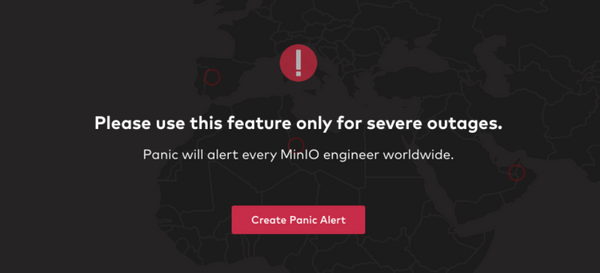
In this blog post we’ll show you how you can quickly get up and running with MinIO, KES and Vault to fully understand the capabilities of server-side encryption.
Read more

As most of you know, we have been hard at work on our YouTube channel
[https://www.youtube.com/@MINIO/videos] creating a series of tutorials for users
of any level. We will use this forum to continually highlight new courses and
content.
Today our focus is on how to Install and Run MinIO on Linux
[https://www.youtube.com/
Read more

While the growth trajectory for data in general is extraordinary, it is the growth of log files that really stand out. As the heartbeat of digital enterprise, these files contain a remarkable amount of intelligence - across a stunning range, from security to customer behavior to operational performance.
The growth of log files, however, presents particular challenges for the enterprise.
Read more

Traditionally, the design, acquisition and deployment of storage required specialized skills and the ability to manage a fair amount of complexity to do successfully. Modern object storage has changed that. This is particularly poignant today - where the purchase of SAN and NAS appliances often take months, or longer, to complete. This stands in stark contrast to software defined object
Read more

Recently, MinIO achieved a major milestone, passing the one billion docker
downloads mark. Almost simultaneously, MinIO notched its 20,000th member of its
public Slack community and its 35,000th GitHub Stargazers - putting the company
in the top 250 repositories on the site (out of 28 million repositories).
There are some that will say that those are vanity metrics,
Read more

In this deep dive instructions guide learn how to expose MinIO services outside of the Kubernetes cluster using AWS Classic Load Balancer, AWS Application Load Balancer and AWS Network Load Balancer.
Read more

This blog post will show you how you can migrate your existing MinIO Gateway setup to a MinIO Server deployment.
Read more

Continuous Delivery (CD) is a software development practice in which code changes are automatically built, tested, and deployed to production servers. In this blog post, we'll focus on how to deploy a MinIO cluster in a production environment.
Read more

Learn about the four options to expose MinIO services outside of your Kubernetes cluster.
Read more

Our love for Kubecon is well documented. When there, we are among friends,
partners, customers and prospects - this year was no different, and we had the
best conversations we have had at any show this year. The Kubernetes community
and MinIO grew up together and thrived together and we remain bullish on what we
can achieve together.
There are,
Read more

Quickly and easily replace HCP with MinIO using this automated tool.
Read more

This tutorial will use R, H2O, and MinIO to build a very simple statistical arbitrage model using foreign exchange (Forex) data.
Read more

The MinIO Batch Framework enables you to run batch operations directly on MinIO deployments. The first operation available is Batch Replication.
Read more

Learn how to use DataProfiler, an OSS project, to identify sensitive information, & you can then use MinIO object storage to protect data.
Read more

The Panic Button is an immensely useful component of SUBNET. Learn how it works, what happens, and why people love it so much (even if they don't like what precedes the pressing of it).
Read more

Continuity (replication) is a better path than recovery (backup). MinIO keeps your business up in the face of disaster.
Read more

When we started in late 2014, our stated goal was to be AWS S3, but for the rest
of the world. Since then we have been working with a single focus to achieve
that goal. Today marks a major milestone towards that goal, from zero lines of
code in 2014 to a billion docker downloads with deployments across the globe.
Read more


























